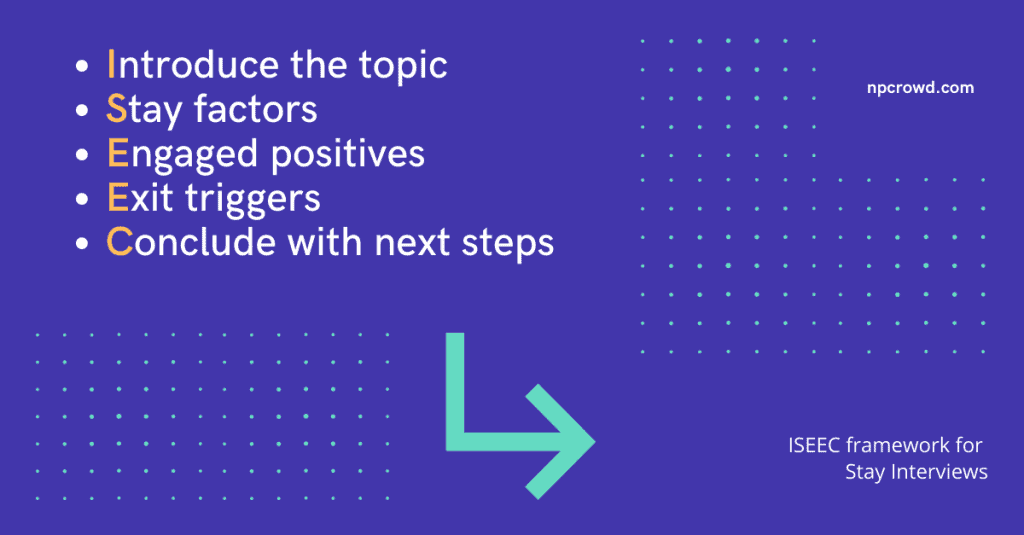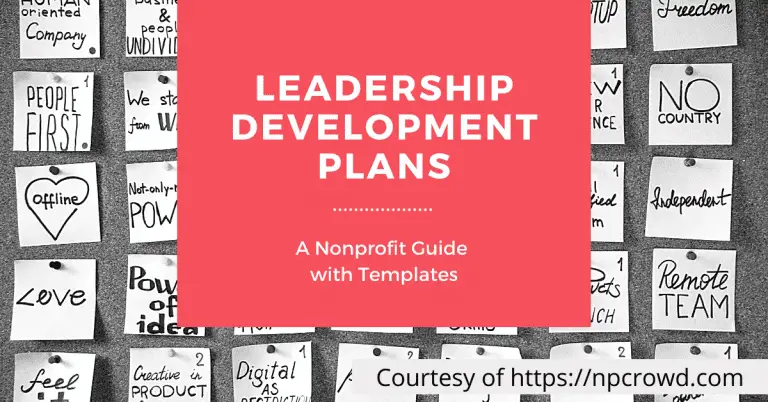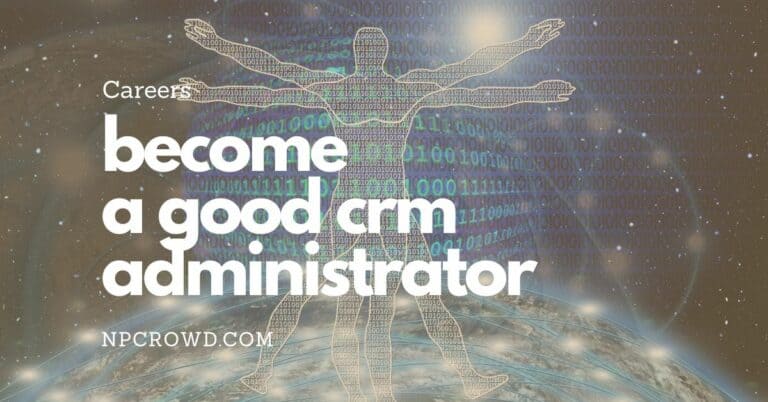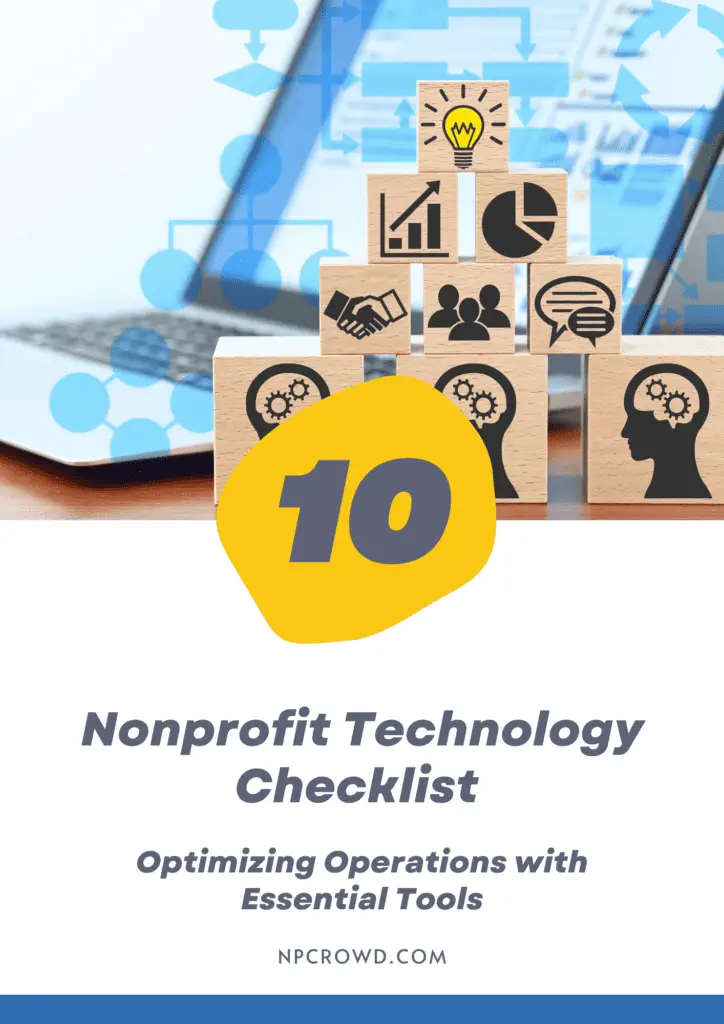Keep Nonprofit Employees Longer – Use Stay Interviews
Disclaimer: This post may contain affiliate links. These links, if used and purchases made, we may earn a small commission. These affiliate programs do not impact the recommendations we make or the resources we refer you to. Our focus is on providing you the best resources for your nonprofit journey.
Keeping top nonprofit talent can be a challenge for 501c3 nonprofit organizations. A simple meeting could make all the difference in keeping your top nonprofit employees and improving your work culture.Let’s learn more about stay interviews and how they work.
What is a stay interview?
Most organizations do exit interviews. By asking carefully crafted questions of employees who are leaving your organization, you can often find areas needing improvement.
The problem is that you are identifying problem areas after your top nonprofit talent exits the organization. Wouldn’t it be nice to get on the other side of the equation?
Stay interviews are the answer.
What is a stay interview? A stay interview is a meeting by a supervisor with an employee designed to discover what might cause them to leave and what keeps them working for an organization. To conduct an effective stay interview, managers create a friendly, conversational environment to ask structured questions over the course of one hour. Note-taking is a requirement.
You are getting in front of the problem.
According to Lisa Brown Alexander, Founder, and CEO of Nonprofit HR, “I will say that I think there’s much more power in the stay interview than there is in an exit interview…it gives you the data earlier on in the employee relationships as opposed to when they are departing and out the door.” – Source: 2021 Talent Retention Survey Results Overview Webinar
This opportunity offers three distinct benefits.
- Press the accelerator – When you know what keeps your employees engaged and on board, you know where to continue to invest. Keep doing what works and keeps your teams engaged.
- Fix and Keep – Identifying problem areas early allows you to rectify the situation before the employee leaves employment. Be open and honest about what you can do. Then follow through on your commitments. You get to retain more of your best nonprofit talent by being proactive and addressing concerns.
- Early warning system – Stay interviews may reveal an unengaged, unhappy team member before they leave. Having time to do succession planning, mitigation, and networking may reduce your time to fill essential roles when an employee exits.
How do I conduct stay interviews?
Remember our definition of a stay interview above. It is a one-on-one meeting between a supervisor and an employee.
Thirty minutes is typically enough time to conduct this type of meeting. However, it may be wise to give it a full hour.
Why? A stay interview is an opportunity to engage with a team member in a meaningful way. It is an opportunity to build trust and increase engagement. So, don’t bring a third party along.
Use this one-on-one time to get real, assuming you have a high trust culture.
The conversation will follow our ISEEC stay interview framework:
- Introduce – Introduce the topic
- Stay – Identify the reasons they “stay.”
- Engaged – Identify what increases trust and engagement.
- Exit – Identify exit triggers.
- Conclude with action steps, if any.
Asking questions is necessary, but practice the art of listening as your number one priority.
You are seeking a two-way conversation. Ask follow-up questions to get to the root of issues that the employee identifies.

What are the stay interview questions to ask?
The best stay interview questions will vary between organizations. We have put together twelve questions covering the five-step ISEEC conversation framework.
1. Introduce
Introducing the topic sets the tone for the conversation. It is essential that you think through the timing and how to communicate the purpose.
Setting the meeting
Do not suddenly put an appointment on your employee’s calendar labeled “stay interview” or “discussion.” Scary!
Instead, find a slow, quieter time to communicate with them verbally.
Say something like, “I want you to know how much I appreciate you and the work you have been doing. Your commitment to our mission and organization is encouraging.
Could we schedule some time to meet this week? I really want to understand what helps you stay engaged and keeps you here. We might even identify some things we can do to strengthen your experience further and keep you happy.”
Then, schedule an hour with them.
Also, don’t forget the power of a handwritten note of appreciation!
Starting the Stay Interview
Starting the conversation could feel awkward. The best antidote is to call out the purpose and expectations.
“Demarcus, thank you for taking the time to talk today. The purpose of our meeting is for you to teach me. I want to learn what keeps you encouraged and motivated to keep working here.
We have a few questions to go through that will help us discover the answers together. We’ll also identify things that may frustrate you to the point where you might even consider other job opportunities.
Discovering these is an excellent thing to get in front of. We can look for opportunities to improve our work culture and specifically your experience here.
Any questions?“
We are letting the employee know we are looking for the positives and brewing negatives, and both are good to name.
If you don’t do this, be prepared to hear only the good. Most employees will want to make a good impression and not upset anyone by calling out their frustrations. Let them know you are looking for both.
Now, let’s get into the discovery questions.
2. Stay
This part of the ISEEC framework is to identify the top factors that keep your employee engaged and happy.
- Positives: What are the things that keep you engaged and loving what you do here? Maybe it’s things like the organization, the people, the clients, the mission. What has kept you here as long as you have?
- Impact: Do you feel that the work you do is making an impact and makes our organization better? Do your coworkers see and understand the impact of your work?
- Best Work: Are you doing the best work in your life right now? What is making that true?
- Utilized: Do you feel that you are being used thoroughly in your role? Is there anything you can contribute that we are missing out on?
- Future: Help me understand your career goals? What would you like to be doing in two years?
3. Engaged
In the stay interview engagement section, we identify significant contributors to the employee’s commitment and motivation.
- Recognition: Tell me about any recent times that someone recognized you or your work, and it motivated you. You know, those times when you walk away and say, “I know I’m in the right place.” Are there any ways we could better recognize you in the future?
- Management: If you were managing yourself, what would you do differently to manage yourself in your current role. What could I do that would increase your engagement and joy in your position?
- Valued: Do your colleagues listen to and value your input? Do you feel that executive leadership listens to and acknowledges your input? What contributes to that feeling?
- Wired: You have a good idea about how you are wired and the things you enjoy doing and do well. If you could create an ideal job made especially for you, what would it look like?
4. Exit
During the Exit portion of the ISEEC framework for stay interviews, we identify triggers that may lead this employee to exit the organization.
- Why: If you ever considered leaving the organization, what things would cause you to consider leaving?
- Frustrations: Are there times in the past year that you found yourself frustrated here? If so, what elements caused the frustration? What helped remove the frustration from lingering, or is it still frustration today?
- Others: When colleagues have left our organization, did you find yourself agreeing with some of their reasons for moving on? What were those reasons you agreed? How can we change that?
5. Conclude
In the conclusion phase, you want your employee to know you heard them.
Summarize what tasks you are committing to take action on as a result of the discussion. If the employee was assigned any action steps, state those as well.
In both cases, agree to a follow-up or due date for reviewing the actions.
Finally, ask the employee if there is anything else on their mind that you have not already discussed. You may be surprised about what they bring up.

Build your stay interview toolkit
Equipping great nonprofits is what we do. So, how do you go about implementing stay interviews?
One option is to get help. Find an excellent nonprofit HR consultant to help you with your talent retention strategy.
If you are more of the DIY sort, we have the following resource to help you get started.
Download Stay Interview Questions template PDF
Download Stay Interview Questions template DOCX
Stay Interview Template
Name:
Supervisor:
Date:
ISEEC Framework
- Introduce – Introduce the topic
- Stay – Identify the reasons they “stay.”
- Engaged – Identify what increases trust and engagement
- Exit – Identify exit triggers
- Conclude – Summarize action steps, accountable party and follow-up date
Introduce
- Find a slower time to be focused
- Communicate the intent of the meeting
- What keeps you here
- How we can keep you here
- Opportunities to grow
Stay
- What are the things that keep you engaged and loving what you do here? Maybe it’s things like the organization, the people, the clients, the mission. What has kept you here as long as you have?
- Do you feel that the work you do is making an impact and makes our organization better? Do your coworkers see and understand the impact of your work?
- Are you doing the best work in your life right now? What is making that true?
- Do you feel that you are being used thoroughly in your role? Is there anything you can contribute that we are missing out on?
- Help me understand your career goals? What would you like to be doing in two years?
Engaged
- Tell me about any recent times that someone recognized you or your work, and it motivated you. You know, those times when you walk away and say, “I know I’m in the right place.” Are there any ways we could better recognize you in the future?
- If you were managing yourself, what would you do differently to manage yourself in your current role? What could I do that would increase your engagement and joy in your position?
- Do your colleagues listen to and value your input? Do you feel that executive leadership listens to and acknowledges your input? What contributes to that feeling?
- You have a good idea about how you are wired and the things you enjoy doing and do well. If you could create an ideal job made especially for you, what would it look like?
Exit
- If you ever considered leaving the organization, what things would cause you to consider leaving?
- Are there times in the past year that you found yourself frustrated here? If so, what elements caused the frustration? What helped remove the frustration from lingering, or is it still frustration today?
- When colleagues have left our organization, did you find yourself agreeing with some of their reasons for moving on? What were those reasons you agreed with? How can we change that?
Conclude
- Summarize action steps. What will be done by whom by when?
- Is there anything else on your mind we haven’t addressed already?
- Thank them for their candor and their continued commitment to your mission
| Action Step | By Whom | By When |
Conclusion
Conducting stay interviews will help reduce your nonprofit turnover and increase retention if you implement changes resulting from what you learn.
Stay interviews work best in high trust environments and may be less effective in organizations where trust is lacking. The stay interview process may be a tool to help build trust when used wisely.
Knowing the right stay interview questions is essential to successful implementation. We provide a starter template above.
Have you seen the power of stay interviews for engagement and retention? Tell us more in the comments below.
Additional Reading
- https://www.501c.com/why-stay-interviews-are-perfect-for-nonprofits/
- https://www.gotostage.com/channel/f7dfadaf0bf348a4a27e0405877670da/recording/0e0cf2ca1ce745928796021554d69722/watch
- https://blog.bernieportal.com/avoid-exit-interviews-stay-interviews
- https://blog.namely.com/blog/why-stay-interviews-are-the-new-exit-interview
- https://www.insperity.com/blog/stay-interview-questions/
- https://builtin.com/recruiting/stay-interview
- https://www.bizjournals.com/baltimore/news/2019/12/06/help-deskhow-stay-interviews-can-help-retain-top.html
- https://lattice.com/library/what-are-stay-interviews-20-questions-to-ask-employees








